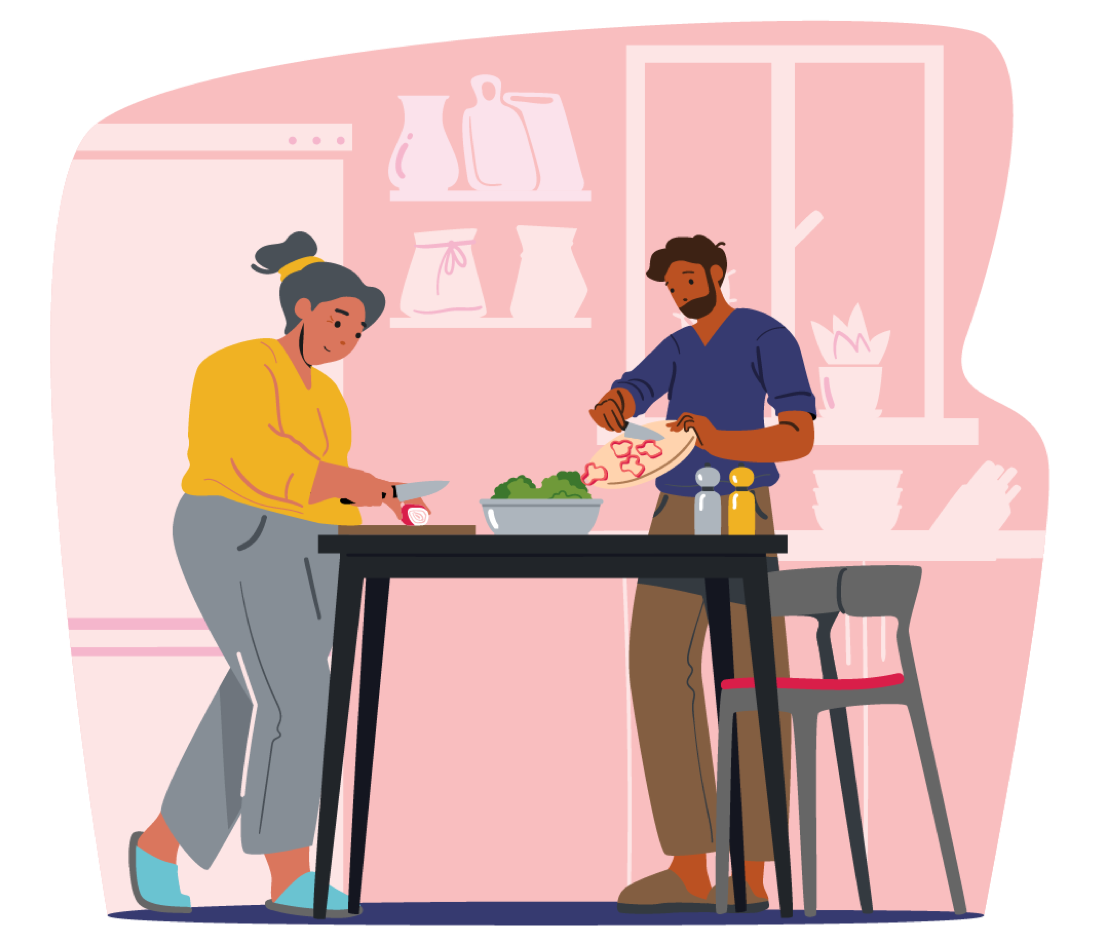Treatment at home
Understanding home treatment


Doctors might recommend receiving anticancer treatment without being admitted overnight to the hospital. Instead, the anticancer treatment is given during regular hospital visits to a ‘day ward’.
As well as going to the ‘day ward’ for treatment, people undergoing ‘at-home’ treatment may need to attend hospital appointments at other times. This could be if the doctor arranges further blood tests or for treatment of medication side effects.

What is a 'day ward'?
A ‘day ward’ is specifically set up for people who do not need to stay in hospital overnight. Unlike an overnight ward, it does not usually contain many beds. Instead, people typically receive treatment while sitting on large, comfortable chairs.
How is treatment given?
Treatment is generally made up of chemotherapy and other types of anticancer therapy.1,2 There are several ways these could be given. For example, some are put straight into the bloodstream through a central venous access (or a CVA), some are given via a subcutaneous injection and others are taken orally. This allows the treatment to work and destroy cancerous cells.
A CVA is a special type of catheter or ‘line’ that is inserted into a vein in the arm, neck or just below the collarbone. It allows medication to be given directly into the bloodstream.3 Doctors can also take blood samples through this. A CVA stays in place throughout treatment and remains in even when people are at home. This means that nurses do not need to insert a new needle for each blood test and treatment.4
Remember, if there are any words or terms you don’t understand, the Terminology Explained document can help guide you.
What to know when managing side effects at home
As with all treatments, side effects may develop.5 When having AML treatment at home, it is good to understand how to manage these. Here are some useful things to know:
1. WHAT TO WATCH OUT FOR
The haematology day ward nurses will tell you what treatment side effects may occur. If having AML treatment, it’s good to talk with the nursing staff about what symptoms to watch out for, and when it is appropriate to contact them if you are worried.
2. KNOW WHO TO CONTACT
If side effects do develop, it’s key to know who to get in touch with. Often the day ward nurses are the ones to contact. However, side effects may develop overnight, so it is important to know who to get in touch with ‘out-of-hours’. Many hospitals have a 24 hour hotline - remember to use it. If you have any symptoms that concern you, do not wait for your next appointment, contact your hospital immediately.
3. OVERNIGHT ADMISSION TO HOSPITAL MIGHT BE NEEDED
If side effects become troublesome, doctors might recommend hospital admission. This is a way to provide additional care and support that is not possible while staying at home. Having a pre-packed hospital bag can be beneficial in these situations.
If you have any questions or concerns regarding side effects, always contact your doctors for support.
Learn more about why a hospital stay might be needed in the In-hospital treatment page.
Find out more about
Managing AML - overview
What is the aim of the treatment? Is it the same for everyone? Find the answers to these questions and more
In-hospital treatment
What happens when you have treatment in hospital? What is a clinical trial? Find the answers to these questions and more.
Understanding bone marrow transplant
How are transplants given? Who is offered a transplant? Find the answers to these questions and more
References
1. DiNardo CD and Cortes JE. Mutations in AML: prognostic and therapeutic implications. Hematology Am Soc Hematol Educ Program 2016; 2016: 348-355.
2. Gregory TK, Wald D, Chen Y, et al. Molecular prognostic markers for adult acute myeloid leukemia with normal cytogenetics. J Hematol Oncol 2009; 2: 23. 20090602.
3. Ge X, Cavallazzi R, Li C, et al. Central venous access sites for the prevention of venous thrombosis, stenosis and infection. Cochrane Database of Systematic Reviews 2012.
4. St. Georges Healthcare, NHS. Acute Central Venous Catheters. https://www.stgeorges.nhs.uk/wp-content/uploads/2014/07/Acute-venous-catheters.pdf [Last accessed April 2022].
5. Blood Cancer UK. Acute myeloid leukaemia (AML) side effects. https://bloodcancer.org.uk/understanding-blood-cancer/leukaemia/acute-myeloid-leukaemia/aml-treatment-side-effects/aml-treatment-side-effects/[Last accessed April 2022]
HAE_2022_0018_IE | April 2022

